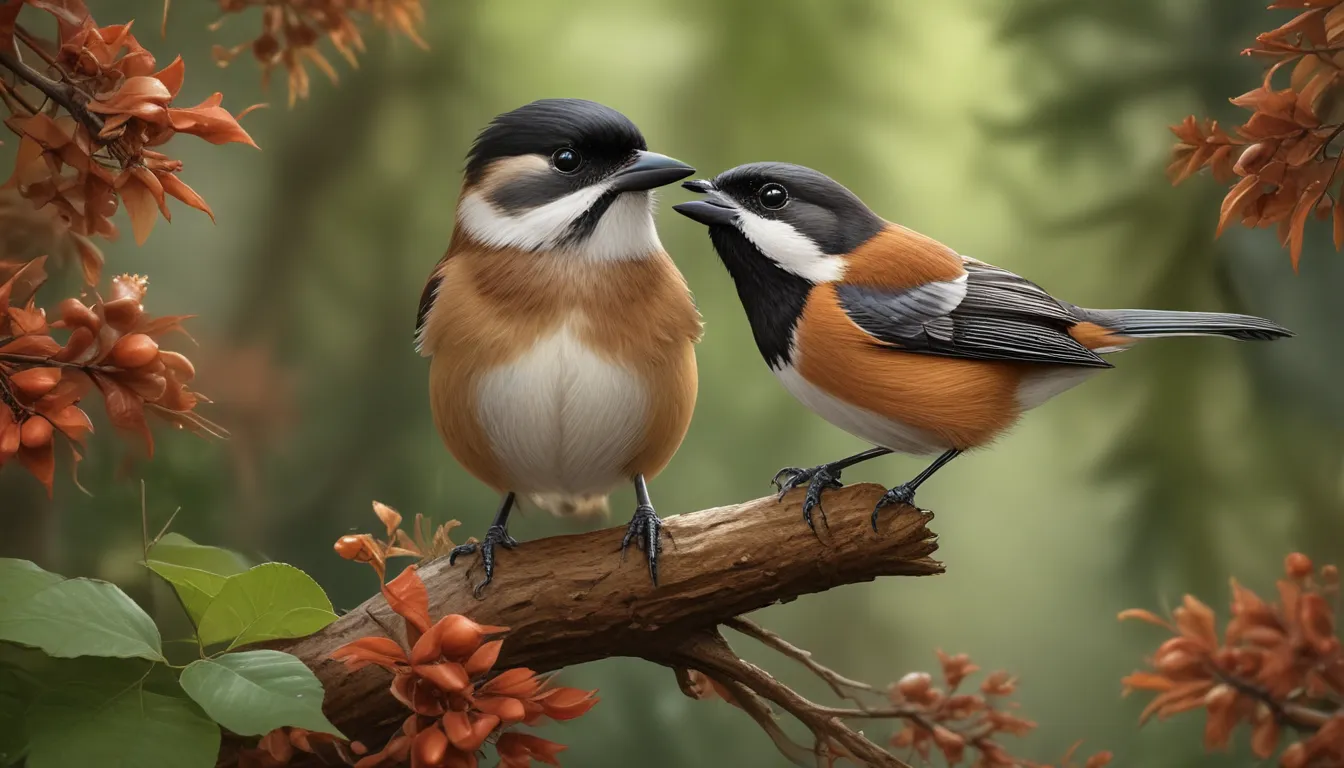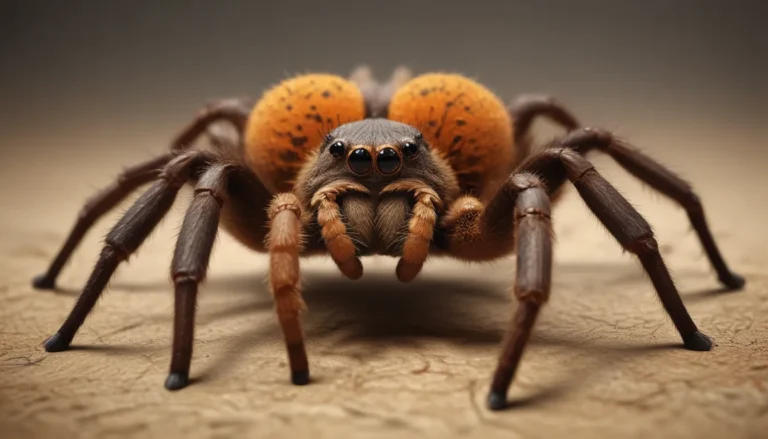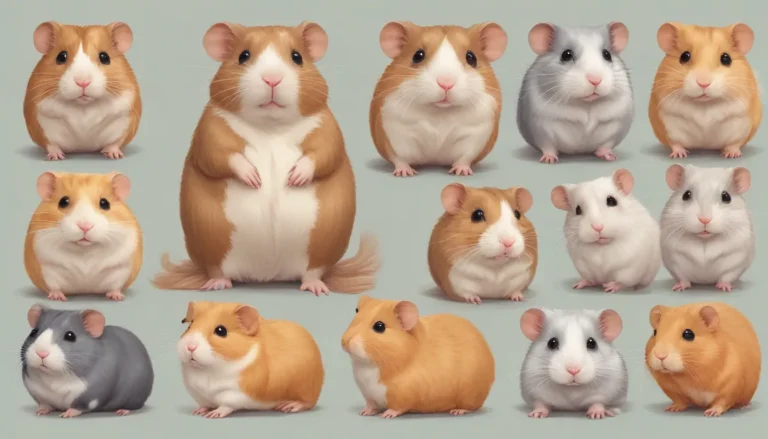The pictures we use in our articles might not show exactly what the words say. We choose these pictures to make you interested in reading more. The pictures work together with the words but don’t take their place. The words still tell you the important facts.
Are you an avid birdwatcher or simply intrigued by the charming avian species found in North America? If so, the Chestnut-backed Chickadee is sure to capture your attention with its distinctive appearance and fascinating behaviors. From its vibrant colors to its unique vocalizations, this small songbird never fails to captivate the hearts of nature enthusiasts. Join us as we unravel 10 intriguing facts about the Chestnut-backed Chickadee, shedding light on its lifestyle, habitat preferences, and much more.
Unveiling the Charm of the Chestnut Backed Chickadee
The Chestnut-backed Chickadee, scientifically known as Poecile rufescens, is a delightful member of the tit family that graces the western regions of North America with its presence. Sporting a striking combination of chestnut brown, black, and white feathers, this small bird is easily recognizable and adored by birdwatchers of all ages. Its spunky personality and intelligent behaviors make it a favorite among nature enthusiasts seeking to unravel the mysteries of the avian world.
Delving into the Habitat of the Chestnut Backed Chickadee
This colorful songbird predominantly thrives along the west coast of North America, stretching from Alaska to California. You can often spot these charismatic creatures in coniferous forests, woodlands, and gardens where they can find a plethora of food sources and ideal nesting sites. Their vibrant plumage stands out against the green backdrop of trees, adding a touch of color to the tranquil surroundings they call home.
Unmasking the Beauty of the Chestnut Backed Chickadee’s Plumage
One cannot help but admire the exquisite colors adorning the Chestnut-backed Chickadee. With its rich chestnut brown back, contrasting black cap, and snowy white cheeks, this small bird is a true masterpiece of nature's design. The striking juxtaposition of colors not only enhances its visual appeal but also aids in its camouflage as it flits through the dense foliage in search of food and shelter.
Echoes of the Forest: The Distinctive Call of the Chestnut Backed Chickadee
Listen closely, and you may hear the melodious call of the Chestnut-backed Chickadee echoing through the forest. Its vocalizations, resembling a series of clear, high-pitched notes that sound like “chick-a-dee-dee-dee”, serve as a means of communication among flock members. This enchanting symphony of sounds adds a touch of magic to the woodland habitat that these charismatic birds call their own.
A Dance Among the Treetops: The Agile Nature of the Chestnut Backed Chickadee
Watch in awe as the Chestnut-backed Chickadee flits effortlessly through the tree branches, showcasing its agility and grace. This highly active and energetic bird is constantly on the move, foraging for insects, seeds, and berries with precision and skill. Its acrobatic maneuvers in pursuit of food sources highlight its adaptability to the dynamic environment of the forest.
Winter Warmth: The Formation of Flocks Among Chestnut Backed Chickadees
As the colder months descend upon the land, Chestnut-backed Chickadees come together in small flocks to brave the winter chill. These avian companions provide warmth and safety in numbers, enabling them to efficiently search for food and protect one another from harsh weather conditions. Their cooperative spirit shines through as they navigate the challenges of the winter season as a unified flock.
Nesting Nooks: The Art of Nest Building Among Chestnut Backed Chickadees
Witness the intricate art of nest building as the female Chestnut-backed Chickadee constructs a cozy abode in natural tree cavities or abandoned woodpecker holes. Using a blend of moss, bark, feathers, and soft plant fibers, she meticulously crafts a warm sanctuary for her offspring. The nest acts as a symbol of familial unity and protection, embodying the essence of a safe haven in the heart of the forest.
Curiosity Unleashed: The Intelligent Nature of the Chestnut Backed Chickadee
Engage in a captivating encounter with the curious Chestnut-backed Chickadee, known for its inquisitive and intelligent demeanor. These clever birds readily explore their surroundings and interact with humans, displaying a keen interest in observing their behaviors. Their curiosity serves as a testament to their adaptability and awareness of the world around them, making them cherished companions in the realm of birdwatching.
The Power of Unity: Cooperative Breeding Behavior Among Chestnut Backed Chickadees
Experience the heartwarming sight of extended family members coming together to support the breeding pair of Chestnut-backed Chickadees in raising their young. These cooperative helpers play a vital role in nest building, chick feeding, and nest protection, showcasing the power of unity and collaboration within the avian community. Their collective efforts ensure the survival and well-being of the next generation, fostering a sense of kinship and connection among the flock.
A Year-Round Symphony: The Resilience of Chestnut Backed Chickadees
Unlike migratory species, the Chestnut-backed Chickadee remains a steadfast resident in its range throughout the year, adapting to the changing seasons with grace and resilience. Its ability to withstand colder temperatures by fluffing up its feathers and creating insulation reflects its remarkable survival strategies in the face of adversity. By observing these resilient birds year-round, we gain a deeper appreciation for their endurance and strength in the wild.
Conclusion: Embracing the Charm and Beauty of the Chestnut Backed Chickadee
In conclusion, the Chestnut-backed Chickadee stands as a beacon of joy and wonder in the vast tapestry of North America's avian diversity. From its distinctive appearance to its intelligent behaviors, this small songbird embodies the essence of grace and resilience in the face of nature's challenges. By exploring the fascinating world of the Chestnut-backed Chickadee, we cultivate a deeper appreciation for the interconnectedness of all living beings in the ecosystem. Let us continue to cherish and protect these enchanting creatures, ensuring their presence in the natural world for generations to come.
FAQs: Unraveling the Mysteries of the Chestnut Backed Chickadee
Have burning questions about the Chestnut-backed Chickadee? Explore our FAQs section below to uncover insightful answers to common inquiries about these captivating birds.
-
Where can I find Chestnut Backed Chickadees?
Chestnut-backed Chickadees are primarily found along the west coast of North America, from Oregon to California, in coniferous forests and woodland areas. -
What do Chestnut Backed Chickadees eat?
Their diet consists of insects, seeds, and berries, with a tendency to cache food for later consumption by hiding it in tree bark or other crevices. -
How do Chestnut Backed Chickadees communicate?
These birds use a variety of vocalizations, including the distinctive “chick-a-dee-dee-dee” call, to communicate with one another within their flock. -
Do Chestnut Backed Chickadees migrate?
While some individuals may move to lower elevations during winter, most Chestnut-backed Chickadees remain non-migratory, staying within their preferred range throughout the year. -
How can I attract Chestnut Backed Chickadees to my backyard?
To attract these birds, provide a mix of food sources such as sunflower seeds, suet, and berries, along with suitable habitat elements like shrubs and trees for nesting and foraging. -
Are Chestnut Backed Chickadees social birds?
Yes, they are highly social and often form small flocks, using vocalizations and body language to communicate and interact with one another. -
How can I identify a Chestnut Backed Chickadee?
Look for their distinctive black cap and bib, white cheeks, and rusty-red back, along with their relatively small size measuring around 4.5 to 5 inches in length. -
Do Chestnut Backed Chickadees build nests?
Yes, they build nests in tree cavities or nest boxes, with the female taking the lead in constructing a cozy nest using a variety of soft materials. -
Are Chestnut Backed Chickadees common?
While not as widespread as other Chickadee species, Chestnut-backed Chickadees are fairly common within their range, although populations may be declining in some areas due to habitat loss. -
Are Chestnut Backed Chickadees beneficial to the environment?
Yes, they play a crucial role in controlling insect populations, especially during the breeding season when they feed insects to their young, contributing to the biodiversity of their habitat and ecosystem.
Our dedication to delivering accurate and engaging content is reflected in the diverse insights and information shared on our platform. Each fact you discover is a testament to the collaborative efforts of real users like you, ensuring a rich tapestry of knowledge and authenticity. Trust in our commitment to quality and credibility as you embark on a journey of discovery and learning with us.






